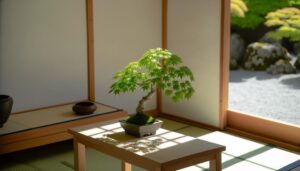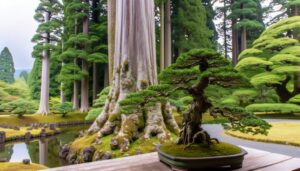Do Bonsai Trees Feel Pain?
Bonsai trees, like all plants, do not feel pain as animals do because they lack nociceptors and a complex nervous system. Instead, they respond to stress through biochemical pathways involving phytohormones such as jasmonic acid and salicylic acid.
These signaling cascades enable plants to detect and react to damage but do not convey the sensory experience of pain. Stress responses in bonsai trees are essential for survival and repair.
Understanding these mechanisms underscores the differences in plant and animal perception. For those intrigued by the intricate ways plants communicate and adapt, further exploration offers fascinating insights.
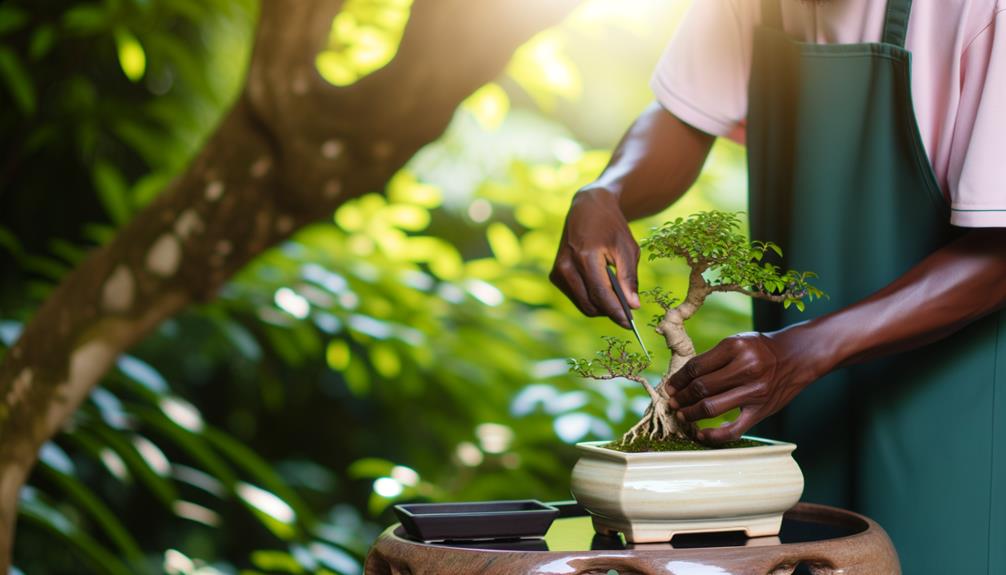
Key Takeaways
- Bonsai trees lack nociceptors, so they do not experience pain as animals do.
- Their responses to stress are biochemical and systemic, not indicative of pain perception.
- Pruning influences bonsai health by modulating hormonal balances and stimulating growth, not causing pain.
- Plants adapt to stress through chemical signaling pathways like phytohormones, not through a nervous system.
- Stress responses in plants are essential for survival and repair, but do not indicate the presence of pain.
Understanding Plant Perception
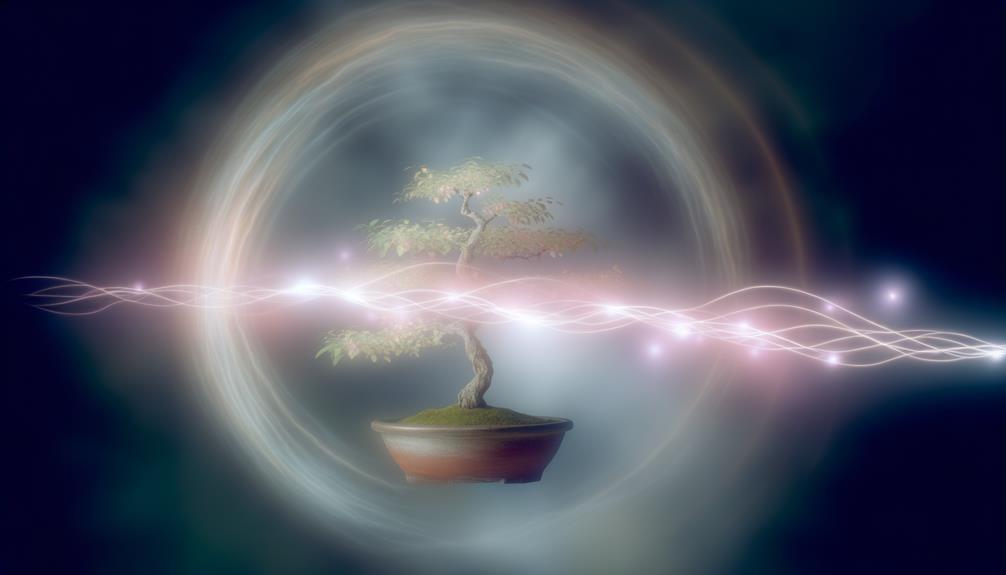
Plant perception, a burgeoning field within plant physiology, explores the mechanisms by which plants detect and respond to their environment. Studies reveal that plants possess intricate signaling networks, allowing them to perceive changes in light, gravity, touch, and chemical gradients.
These networks involve receptors, such as photoreceptors and mechanoreceptors, which facilitate the transmission of environmental information through electrical and hormonal pathways. For instance, plants exhibit tropic responses like phototropism and gravitropism, adjusting their growth direction in response to light and gravity, respectively.
Additionally, plants release volatile organic compounds (VOCs) as a response to herbivore attacks, signaling nearby plants to activate defense mechanisms. Understanding these sophisticated perceptual capacities elucidates the complexity of plant-environment interactions, transcending traditional views of plant behavior.
The Science of Plant Pain
Recent advancements in plant physiology have sparked intriguing discussions about whether the intricate signaling networks in plants could be indicative of a capacity for experiencing pain. Studies have shown that plants possess complex mechanisms for detecting and responding to stress, such as the release of signaling molecules like jasmonic acid and electrical impulses.
While these responses are essential for survival, they are not evidence of sentience or pain. Plants lack nociceptors, the specialized pain receptors found in animals. Instead, their responses are biochemical and systemic, aimed at mitigating damage and promoting repair.
Although plants exhibit sophisticated defense strategies, equating these to the subjective experience of pain remains scientifically unfounded. Further research is needed to fully understand plant signaling and perception.
Nervous Systems in Animals Vs. Plants
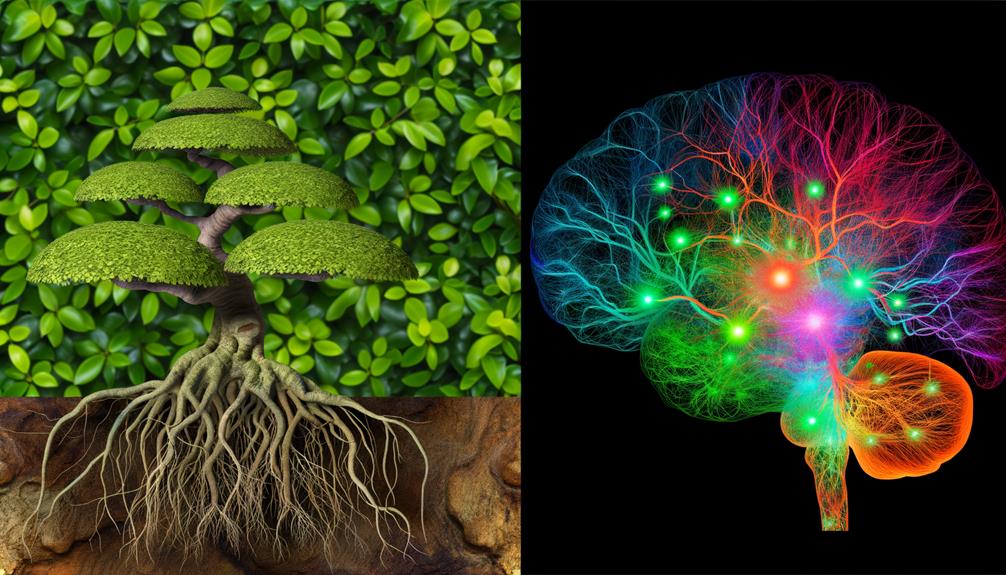
The disparity between the nervous systems of animals and the signaling mechanisms in plants underscores fundamental differences in their ability to perceive and respond to environmental stimuli. Animals possess complex nervous systems comprising neurons that transmit electrical impulses, facilitating rapid and coordinated responses.
In contrast, plants lack such neural architecture and instead rely on chemical signaling pathways, such as the transmission of phytohormones and calcium waves, to adapt to their environment. Evidence-based research in plant physiology reveals that these signaling mechanisms enable plants to respond to stressors, albeit at a slower pace compared to animals.
While plants can detect and react to various stimuli, the absence of a nervous system suggests a fundamentally different mode of perception and response.
Stress Responses in Bonsai Trees
Bonsai trees exhibit unique stress responses that are modulated through intricate chemical signaling pathways, reflecting the broader mechanisms observed in plant physiology. These responses include the synthesis of phytohormones such as abscisic acid (ABA) and jasmonic acid (JA), which mediate the tree's reaction to environmental stressors. Research demonstrates that these chemical signals can trigger defensive mechanisms, including stomatal closure and the production of protective proteins.
| Signal Molecule | Origin | Function |
|---|---|---|
| Abscisic Acid (ABA) | Leaves, roots | Induces stomatal closure |
| Jasmonic Acid (JA) | Damaged tissues | Activates defense genes |
| Salicylic Acid (SA) | Systemic tissues | Enhances pathogen resistance |
| Ethylene | Ripening fruits | Mediates stress responses |
| Auxin | Growing regions | Regulates growth and development |
Understanding these pathways provides insight into how bonsai trees manage stress at a biochemical level.
Mechanisms of Damage Detection
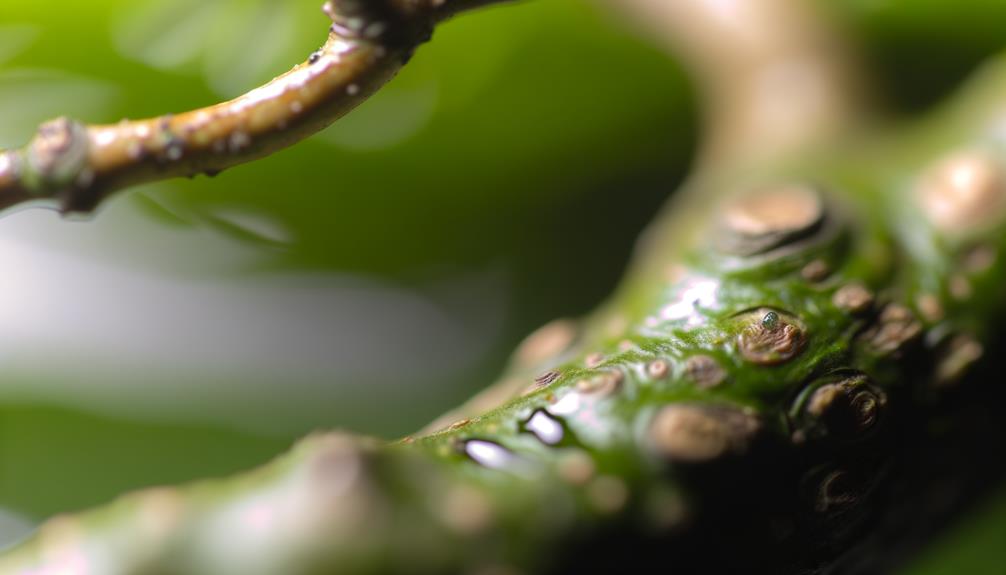
When subjected to physical damage or environmental stressors, bonsai trees initiate complex signaling cascades to detect and respond to the injury. These mechanisms involve the release of signaling molecules such as jasmonic acid, salicylic acid, and ethylene, which play pivotal roles in the tree's defense responses.
Upon detection of harm, calcium ions act as secondary messengers, rapidly propagating through the plant's vascular system to activate specific genes associated with wound healing and defense. Reactive oxygen species (ROS) are also produced, serving both as signaling molecules and antimicrobial agents.
These physiological responses are essential for the tree's survival, allowing it to mitigate damage and initiate repair processes, although they do not equate to the perception of pain in animals.
Ethical Considerations in Bonsai Care
Evaluating the ethical dimensions of bonsai care necessitates a thorough understanding of the physiological stress responses induced by specific horticultural practices. Pruning, wiring, and root restriction, fundamental to bonsai artistry, provoke measurable stress responses in plants, evidenced by altered hormone levels and growth patterns.
For instance, the increase in abscisic acid and ethylene production signifies stress, potentially analogous to pain perception in animals. Recognizing these responses underscores the need for conscientious care, ensuring interventions are timely and minimally invasive. Ethically, this aligns with the principle of minimizing harm while achieving aesthetic objectives.
Integrating scientific insights into bonsai maintenance fosters a balance between artistic expression and plant welfare, reflecting a responsible approach to this intricate horticultural practice.
Enhancing Bonsai Health

Enhancing bonsai health necessitates an understanding of best watering practices, nutrient-rich soil composition, and precise pruning techniques.
Evidence-based studies indicate that maintaining proper hydration levels and nutrient balance can greatly impact the physiological well-being of bonsai trees.
Additionally, strategic pruning can promote robust growth and structural integrity, ensuring the long-term health of the plant.
Optimal Watering Practices
Proper watering practices are critical for maintaining the physiological health and vigor of bonsai trees, as they directly influence cellular hydration, nutrient transport, and overall metabolic function.
Consistent moisture levels are essential; both overwatering and underwatering can lead to root rot or dehydration, respectively. Evidence suggests that ideal watering involves a balance where the substrate remains moist but not waterlogged. It is advisable to use well-draining soil to facilitate aeration and prevent water stagnation.
Monitoring environmental conditions such as humidity, temperature, and light exposure is paramount, as these factors modulate the plant's water uptake and transpiration rates. Implementing a regular watering schedule tailored to the specific species and environmental context enhances the bonsai's resilience and longevity.
Nutrient-Rich Soil
In conjunction with best watering practices, utilizing nutrient-rich soil is essential for supporting the intricate physiological processes that underpin bonsai tree health. Nutrient availability in the soil directly influences photosynthesis, cellular respiration, and overall metabolic functions.
Essential macronutrients such as nitrogen, phosphorus, and potassium are crucial for chlorophyll production, root development, and energy transfer. Additionally, micronutrients like iron, manganese, and zinc play a pivotal role in enzyme activation and hormonal balance.
Studies have demonstrated that a well-balanced substrate enhances root aeration and microbial activity, fostering a symbiotic environment for nutrient uptake. The selection of a high-quality, well-draining soil mixture, often supplemented with organic matter, is essential in promoting the longevity and vigor of bonsai specimens.
Pruning Techniques
Pruning is an essential horticultural practice that directly influences the structural integrity and physiological health of bonsai trees. By strategically removing specific branches and foliage, pruning encourages best light penetration, air circulation, and nutrient allocation, thereby enhancing photosynthetic efficiency.
Scientific evidence suggests that precise pruning can modulate hormonal balances, such as auxins and cytokinins, which are critical for growth regulation and stress response in plants. In addition, pruning stimulates the production of secondary metabolites, aiding in pathogen resistance.
Correct timing and method of pruning—typically during dormancy or early growth stages—minimize plant stress and maximize recovery. Therefore, meticulous pruning not only shapes the aesthetic form but also fortifies the overall importance of bonsai trees, ensuring their longevity and resilience.
Future Research Directions
Continued research into the mechanisms of plant perception and response to stimuli is essential to fully understand whether bonsai trees experience pain. Investigations should focus on the following areas:
| Research Area | Description | Expected Outcomes |
|---|---|---|
| Neurobiological Pathways | Study of electrical signaling in plants | Insights into plant nervous system analogs |
| Hormonal Responses | Analysis of stress-induced hormone production | Understanding of plant stress mechanisms |
| Gene Expression | Examination of gene activity under stress | Identification of pain-related genes |
| Comparative Botany | Cross-species analysis of pain perception | Broader context of plant sensory systems |
| Ethylene Production | Monitoring ethylene levels during pruning | Correlation of ethylene with stress signals |
These directions will help elucidate the complex interactions governing plant responses, potentially redefining our understanding of plant physiology and perception.
Conclusion
Finally, while bonsai trees, similar to their full-sized counterparts, lack a nervous system and therefore do not experience pain in the anthropomorphic sense, they do display intricate stress responses to environmental stimuli. Understanding these mechanisms is essential for ethical bonsai care, guaranteeing their health and longevity.
Future research must delve deeper into the complexities of plant perception and response, surpassing current knowledge and potentially bringing about a paradigm shift in plant physiology and horticultural practices.


